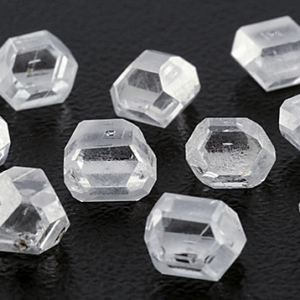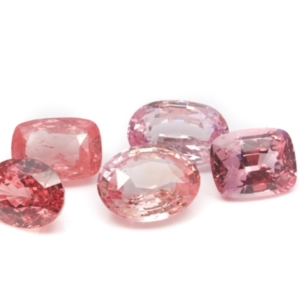Magnesite stone – properties, virtues & benefits
Magnesite stone is a white, porous mineral, often used for its soothing and relaxing properties in lithotherapy. Discover its virtues and benefits for physical and mental health.
CHARACTERISTICS OF MAGNESITE
- Chakra: Solar plexus (Manipura).
- Properties: Soothing, relaxing, anti-stress, purifying.
- Astrology: Neptune.
- Zodiac: Aquarius, Pisces.
- Elements: Earth, Fire.
- Colors: White, Gray, Pale Yellow.
- Hardness: 3.5 to 4.5 on the Mohs scale.
- Chemical Formula: MgCO3 (magnesium carbonate).
- Associated god: None.
PIERRE MAGNÉSITE – ITS HISTORY
The German mathematician Dietrich Ludwig Gustav Karsten (1768-1810) was the first to describe magnesite (MgCO3) in 1808. However, it was in 1785 that Jean-Claude Delamétherie gave it its name in reference to its chemical structure, which is composed of various minerals such as carbonate, sulfate, nitrate and chloride. Magnesite was discovered in Magnesia, Greece, hence its name. It is mined on an industrial scale for its ore and derivatives, such as magnesium oxide and carbonate. It is widely used for pharmaceutical purposes and added as a food additive.
MAGNESITE STONE – ITS ORIGIN AND COMPOSITION
Magnesite is a crystalline mineral with a trigonal rhombohedral lattice structure and is designated by the code MgCO3. Magnesium carbonate is the main component of this crystal, but it may also contain inclusions of manganese, calcium, iron, cobalt, nickel crystals and organic compounds. Its natural color varies according to its type and the presence of impurities, ranging from white to brown with shades of gray or yellowish. Howlite is a porous form of magnesite, white in color with streaks of gray. Green magnesite is rare. With a hardness of around 4 on the Mohs scale, it is brittle, transparent or translucent, with a matte or vitreous lustre. This porous mineral is rare on the Earth’s surface and takes hundreds of thousands of years to form. Magnesite is mainly found in Brazil, but there are also several deposits in Europe, notably in Germany, Austria, Spain and France. Its name derives from its main chemical composition, magnesium, and from the place where it was discovered in Greece, Magnesia. It is also known by other names such as argillomurite, baldisserite, bandisserite, baudisserite, giobertite, magnesianite, carbonated magnesia and roubschite.

GAGNESITE STONE – VERTIES AND PROPERTIES
PSYCHOLOGICAL MAGNESIS
The stone in question has soothing properties for the psyche, reducing tension, whether nervous or muscular in origin. It also acts as a moderator of the nervous system, attenuating emotional excesses, reducing anxiety and soothing states of sadness. It is also stimulating for the faculties of expression and communication, helPing to organize thoughts clearly and harmoniously in those who wear it as a pendant or bracelet. It is effective for improving attention and memory, making it an asset for students during learning and exam periods. This stone can also be used on the body’s energy centers, such as the root chakra, which can help regulate prostate problems, reduce night-time waking caused by the need to urinate and accentuate weight loss. The heart chakra is also an energetic center on which this stone can be used to soothe tension in the mind and strengthen the cardiac system. The crown chakra can also benefit from this stone, as it soothes headaches and sinus problems and facilitates communication. This stone is particularly recommended for people of the signs Gemini and Virgo, but it can also be beneficial for people of all zodiac signs.
PHYSICAL MAGNESIA
Lithotherapy uses magnesite stone for its beneficial effects on physical health. It can be used in elixir form to alleviate gastrointestinal disorders and rebalance the liver. It also improves digestion, relieves gallbladder attacks and reduces headaches and sinus pain. It is also effective in relieving joint pain, balancing nerve impulses and strengthening bones. Its ability to eliminate toxins and fats makes it an essential stone for people with weight problems. It is often used in combination with dieting to help reduce food cravings and fat accumulation.
Jewelry made from different colored varieties of magnesite stone or white howlite is a valuable aid to improving health naturally at an affordable price. There is a wide variety of jewelry, shapes, lengths and colors to suit all needs and morphologies. This unique stone with its crystals is easily accessible in France, at an affordable price in gem or elixir form.

MAGNESITE STONE – CLEAN AND RECHARGE
Magnesite is a natural stone that can accumulate negative energies over time. It is therefore important to regularly cleanse and recharge it to optimize its lithotherapy benefits. Here are some cleaning and recharging methods adapted to magnesite stone:
Cleaning:
- Water: Rinse the stone with clear water to eliminate negative energies. Be careful, water can damage the stone if it is too porous, so this method should be used with caution.
- Fumigation: pass the stone over sage or palo santo incense smoke to purify its energy.
- Earth: bury the stone in earth for several hours to cleanse it deeply.
Charge:
- Sun: Place the magnesite stone in the sun for several hours to recharge it with positive energy.
- Moon: Expose the stone to the light of the full moon for one night to recharge it with lunar energy.
- Crystals: place the magnesite stone on a cluster of rock crystal or amethyst for several hours to recharge it with vibratory energy.
It is recommended to clean and recharge the magnesite stone about once a month, or more often if you use it regularly.
WHERE DOES THE NAME MAGNESITE COME FROM?
The name “magnesite” comes from the region of Magnesia in Greece, where the stone was first discovered. Magnesia is a historic region of Thessaly, Greece, known for its magnesite deposits. Magnesite is a magnesium carbonate that is often used as a raw material to produce magnesium metal, magnesium oxides and magnesium salts. It is also used in lithotherapy for its physical and emotional soothing and relaxing properties.
WHICH CHAKRA DOES MAGNESIS ACT ON?
Magnesite stone is mainly associated with the solar plexus chakra (Manipura), which is located in the stomach. The solar plexus chakra is associated with self-confidence, willpower, self-esteem and digestion. Magnesite acts on this chakra by promoting emotional balance and relieving tension linked to stress, anxiety and everyday worries. It can also help boost self-confidence and stimulate creativity. Magnesite is therefore a useful stone for those seeking to connect with their own inner power and regain emotional balance.
WHICH ASTROLOGICAL SIGN IS ASSOCIATED WITH MAGNESIA?
Magnesite is associated with the zodiac signs Aquarius and Pisces. Aquarians are known for their creativity, originality and independence, and magnesite can help stimulate these qualities by promoting emotional balance and stimulating creativity. Pisceans are known for their sensitivity, imagination and intuition, and magnesite can help soothe emotional tensions and strengthen intuition. Magnesite is therefore a beneficial stone for those born under these astrological signs, but it can also be useful for anyone looking to stimulate their creativity, calm their mind and strengthen their intuition.
MAGNESITE STONE SUMMARY
Magnesite stone is a mineral composed of magnesium carbonate (MgCO3) that forms in sedimentary rocks in the presence of magnesium. It occurs as white or grayish crystals, but can also be found as masses or veins. Magnesite is often used as a source of magnesium in industry, but it also has uses as a refractory material in high-temperature furnaces, as a building material and as an ornamental stone. It is also used in certain medical treatments for conditions such as heartburn and peptic ulcers. Magnesite stone is considered a healing stone in lithotherapy, known to help relieve stress and anxiety and bring a sense of inner peace.

